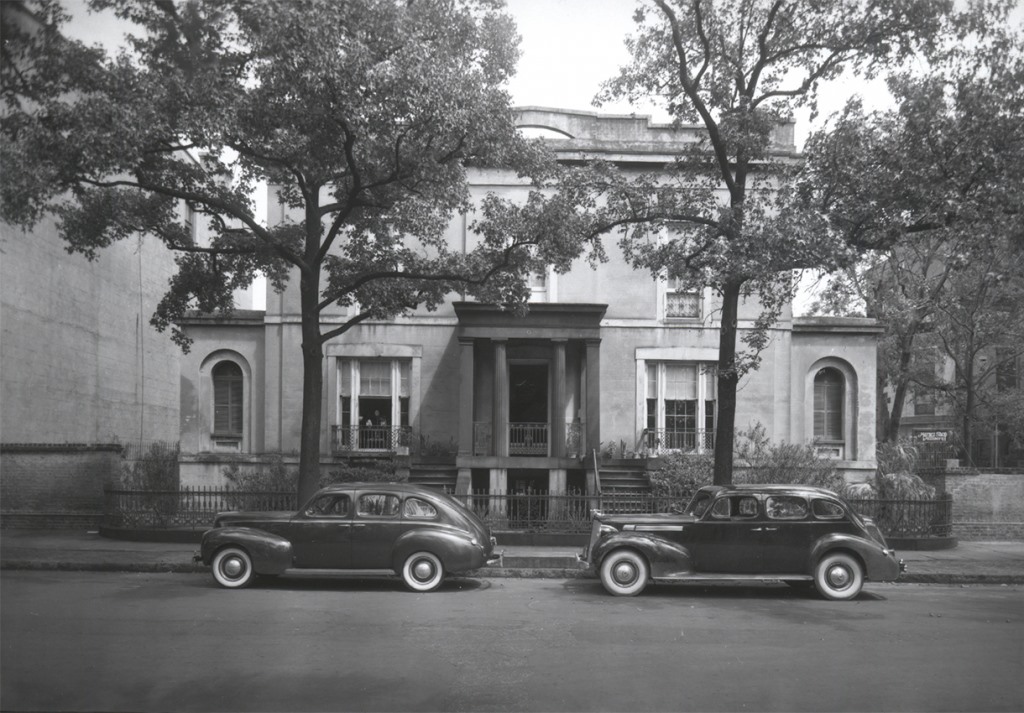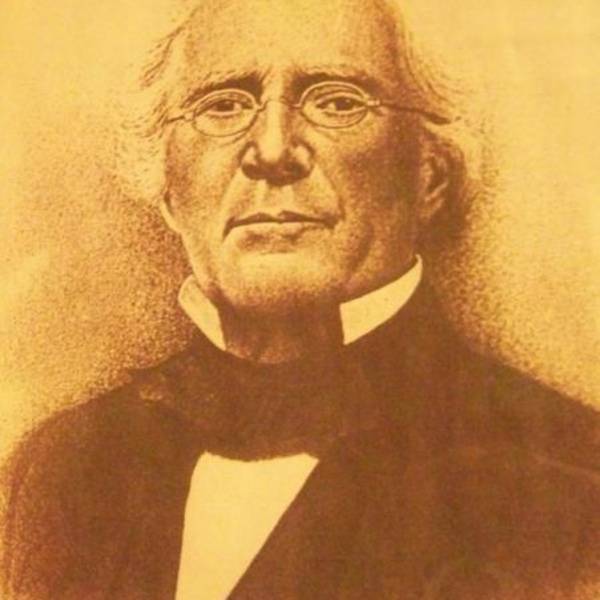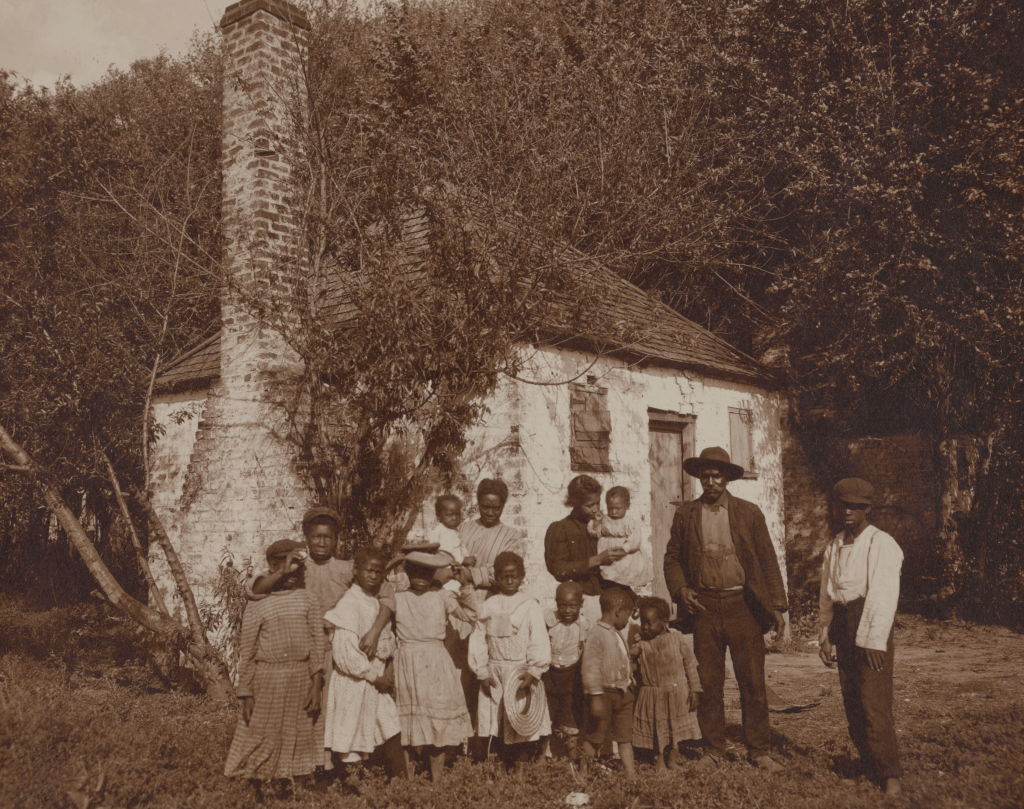
Source: @OfficialSWH / facebook
In Savannah, Georgia, on the edge of Madison square sits a house with a disturbing past. The story of Sorrel Weed House is chilling, scary and its history is shrouded in horrific tales from the antebellum south.
These tales include a slave girl named Molly who lived in the mid-1800s. She was mysteriously hung after her slaveowner’s wife committed suicide.
Now Molly’s ghost is trapped in the house along with its horrors, haunting it for eternity.
Paranormal activity buffs consider Sorrel Weed House to be one of the most haunted homes in the U.S.
The internet is flooded with stories of ghost hunters visiting the estate and hearing screams late at night, seeing ghostly figures in photos, and even seeing a lady in all black roaming the hallways.
Whether you believe in ghosts or not, there is no questioning the horrors people of color, as well as women, faced living in the antebellum south. Ghost stories are usually told because some horrific tragedy didn’t get the justice or attention it deserved. Well, let’s give it some attention.
Savannah During The Antebellum South (1783 – 1861)
The antebellum area was a period in U.S. history when slavery saw its biggest expansion. The American Revolutionary War decimated Savannah’s slave population, creating financial losses and hardships throughout the city. According to a report by GSU, one-third of the slaves in Georgia escaped with the British Army, and many others fled and established maroon communities outside the city.
Maroon communities were groups of Africans who fled to geographically secluded regions of America to escape slavery and persecution from Europeans. Their goal was to live as free people beyond the scope of colonial oppression.
This left Savannah with a shortage of slaves. Whites believed the only path to recovery was the resurrection of slave labor.
The invention of the Cotton Gin would revitalize the cotton Industry and greatly increased the demand for slaves. In 1790 there were six slave states; in 1860 there were 15.
If you wanted to be rich in the south, the fastest way to do that was by getting involved in the sale trade. Enter one, Francis Sorrel a nineteen-year-old immigrant from Haiti.

Source: myspace / iOne Digital
The Story of Francis Sorrel
Sorrel was born in Santo Domingo on May 4, 1793. His father was Colonel Antoine Francois Sorrel, an infantry lieutenant, and engineer for the French Navy. His mother Eugenie de Sutre, died when he was just a month old. Although there are no records that make mention of her, some believe she was a free woman of color. Haiti was in the early stages of the Haitian Revolution, which was a volatile and bloody period for the country.
Sorrel’s father would eventually leave Haiti in 1803 without his son. Francis would never see his father again, but the boy would find a way. He got a job as a clerk at a merchant firm in Port au Prince. He would excel and eventually is transferred to the firm’s branch in Baltimore.
With dreams of being a wealthy American, Sorrel worked hard at his new position in Maryland, moved to Savannah in 1819, and started a firm with his former employee Henry Douglass. They began to advertise in local newspapers advertising the sale of whiskey, butter, corn, and flour. They were also listed as shippers of a slave bound for Baltimore. This would be Francis’ first taste of life in the slave trade business, but the company would primarily focus on the sale of cotton and other agricultural products. On September 5, 1822, Francis would marry seventeen-year-old Lucinda Ireland Moxley, the niece of his partner Henry Douglass. The Douglass family were wealthy slave-owning Virginians who saw a partnership with Sorrel and his firm as very lucrative, but never once thought how terrifying it was for a seventeen-year-old girl to be married to a man because of business opportunities. Two years later Francis Sorrel would use his newly found marriage status, some acquired wealth, and connections with wealthy families, to officially become a citizen of the United States. He was naturalized in Savannah’s Superior on July 24, 1824. Just a year later he ended his business partnership with Henry Douglass and started his own firm. It’s then when Sorrel and the horrors truly begin.
In 1826, tax records revealed he bought three slaves, then sent one of them, a 40-year-old black woman to New York City. A year later records show he sold a black slave girl to a man named R.W. Stiles for $300. A month later his wife would tragically die from yellow fever. He would then marry his dead wife’s younger sister, 23-year-old Matilda in 1829.
The last occasion on record of Sorrel selling people was on July 11, 1833. He sold a 25-year-old slave girl named Louisa and her 10-month-old daughter to a man named William W. Gordon for $400.
With business booming, Sorrel bought property all over the city and started production of his Greek Revival home which was completed in 1841.
In 1938 he purchased a ship named the William Gaston for $10,000. From 1839 and 1860 the ship would appear on many slave manifests. Records show it made more than 90 trips to ports in Georgia, South Carolina, and Florida, although it is not known for sure if that ship was the same owed by Sorrel. But we do know he owned as few as 3 and as many as 11 slaves within a given year. In 18 years of tax records, he owned about 6 slaves a year. That’s almost two decades of free labor. This man owned human beings for almost 20 years and forced them through to work and live under his thumb. He also used violence and oppression to keep them submissive.
Public hangings were a part of Savannah’s culture. The slave uprisings in Haiti terrified slave owners in America and led to a system of oppression that included free black as well as native Americans. Sexual intercourse among free people of color and slaves was not permitted. Black people were also not allowed to gather and communicate in large groups. More rules were being created for being who were already deemed, slaves. And although we don’t have a mirror directly into the window of Francis Sorrel’s life, we can paint a picture. Wealth during time came from how well you could keep your slaves in line. The commodity was crucial for the advancement of wealth among white men in Savannah. Keeping them tame and in line meant more room for money-making.

Source: Buyenlarge / Getty
Slave-owners And Sexual Relationships With Their Slaves
And even though slave labor was seen as male-centric work, black women slaves were valuable commodities among white men. Sorrel owned and sold many young black women during his 18 years’ owning slaves. White men regularly raped or coerced their young women slaves. By 1960, over 2,000 mulattoes live in the city of Savannah, but black men were not permitted to have sex with white. This meant master-slave sexual intercourse was frequent among the townsman. Thousands of women in the Antebellum South were forced and manipulated into consensual sexual relations with their owners.
According to folklore, Francis Sorrel also had infidelity problems, which led to the death of Matilda, his second wife. Stories say Francis had an intimate relationship with one of his slave girls named Molly. His wife caught wind of the affair and the two in the act. Let’s be clear consent means both parties are free to make their own choices. But since Molly was a slave, she wouldn’t have had much choice in having a relationship with Sorrel, her slave owner.
The Death Of Matilda Sorrel and Slave Girl Molly
One night during their sexual encounters, Sorrel’s wife Matilda discovers the affair and is completely broken. In a manic state, Matilda jumps from a second-story window of the house next door to the Sorrel house, killing herself.
A few weeks later slave girl Molly was found dead hanging from a noose in the carriage at the Sorrel home estate.
The ghost of Molly now haunts the estate and her tragic death became folklore among the city people. Questions swirled around the two deaths. Did Sorrel have a hand in both? Even though there are newspaper articles to support the death of Matilda, there is no evidence to prove the death of Molly.
Records show between 1826 and 1857 Francis did own a slave girl named Molly. But, he shipped from Savannah to New York City, as she appears on a slave manifest as being transported north in 1857, three years before his wife’s death. There is no way to prove if Molly was actually on that ship or if she was killed. But we do know thousands of black people were killed during the antebellum era with no death records, no justice, nothing — just folklore.
Federal Slave Censuses were recording in Savannah from 1850 to 1860. In it, Francis Sorrel was said to be the owner of 5 slaves described as black and 8 slaves described as mulatto. A sexual encounter with Sorrel and one of his slave girls is not far-fetched by no stretch of the imagination.
But the truth will never be told, just stories like these which live in our folklore. If America has ghosts from their past, their origin stories directly tie into the horrors of the antebellum south and the horrific ordeals people of color had to endure during this time.
The true horror story is having to live your whole life in bondage. That was a reality for so many black people during the early Americas. Their pain turned into our ghost stories.
But that was just a clever way for white America to accept the atrocities dealt with people of color throughout this countries history. Ghost hunters and haunted tour guides make millions from Molly’s story. But if that story is gonna make you rich, then why not give it the angle it deserves? How the system of male dominance and patriarchy coupled with slavery terrified people of color and made white men rich. Kinda sounds like a scary movie.
SEE MORE BLACK FOLKLORE:
The Haunting Of Lake Lanier And The Black City Buried Underneath
The Story Of Princeville: The First Black Town In America
The Antebellum Tale Of Black Slave Girl Molly And The Haunting Of Sorrel-Weed House was originally published on newsone.com















